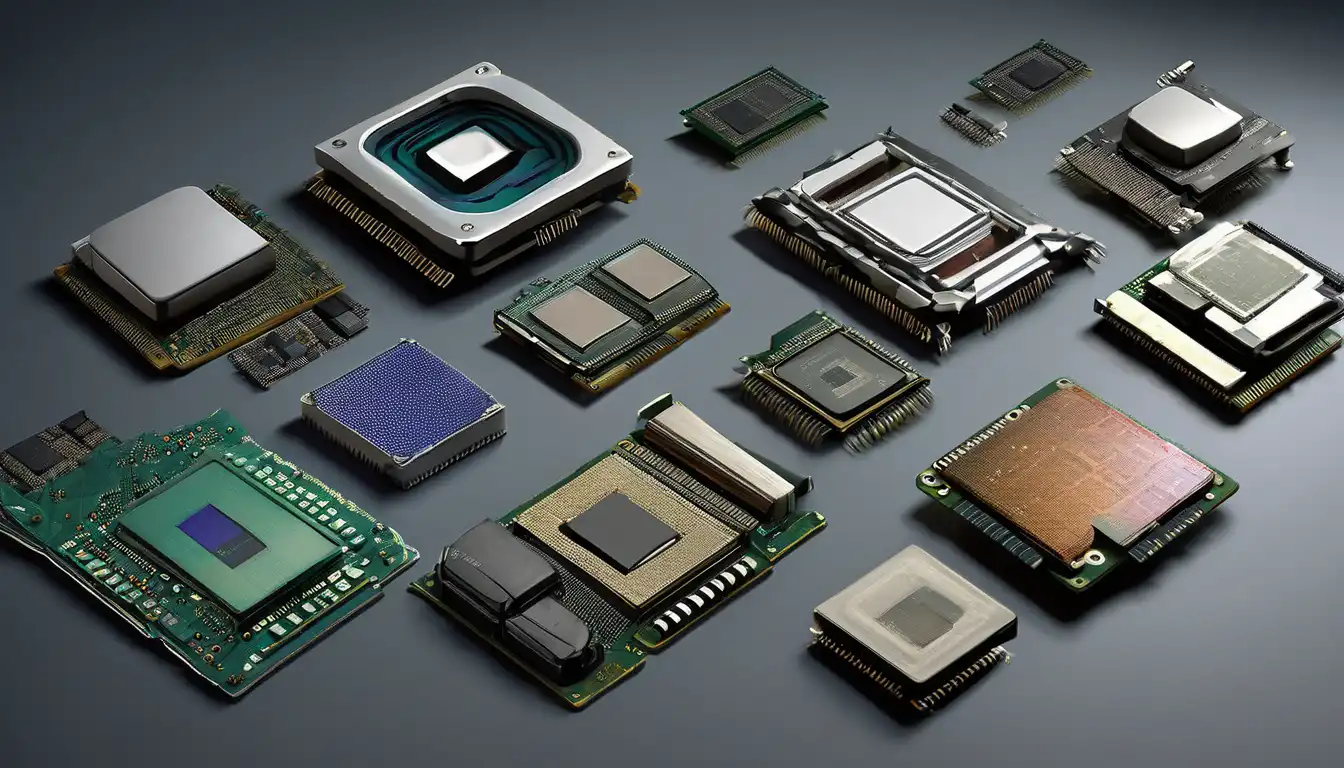The Dawn of Computing: Early Processor Technologies
The evolution of computer processors represents one of the most remarkable technological journeys in human history. Beginning with massive vacuum tube systems that occupied entire rooms, processors have transformed into microscopic marvels capable of billions of calculations per second. This transformation didn't happen overnight—it unfolded through decades of innovation, each breakthrough building upon the last.
In the 1940s and 1950s, the first electronic computers used vacuum tubes as their primary processing components. These early processors were enormous, power-hungry, and prone to frequent failures. The ENIAC, one of the first general-purpose electronic computers, contained approximately 17,000 vacuum tubes and consumed 150 kilowatts of electricity. Despite their limitations, these early systems laid the foundation for modern computing by demonstrating that electronic devices could perform complex calculations.
The Transistor Revolution
The invention of the transistor in 1947 marked a pivotal moment in processor evolution. These semiconductor devices replaced bulky vacuum tubes, offering smaller size, lower power consumption, and greater reliability. The transition to transistors enabled computers to become more practical and accessible, though they were still primarily used by governments, universities, and large corporations.
By the late 1950s, integrated circuits emerged, allowing multiple transistors to be fabricated on a single silicon chip. This innovation paved the way for the first microprocessors and represented a fundamental shift in how processors were designed and manufactured. The ability to pack more components into smaller spaces began the trend that would later become known as Moore's Law.
The Microprocessor Era Begins
The 1970s witnessed the birth of the modern microprocessor, with Intel's 4004 processor leading the charge. Released in 1971, this 4-bit processor contained 2,300 transistors and operated at 740 kHz—modest by today's standards but revolutionary at the time. The 4004 demonstrated that complete central processing units could be manufactured on a single chip, making computing power more affordable and accessible.
Intel continued to push boundaries with subsequent processors like the 8008 and the groundbreaking 8080. These 8-bit processors found their way into early personal computers and embedded systems, establishing the foundation for the PC revolution that would follow. The competition intensified as companies like Motorola and Zilog entered the market with their own microprocessor designs, each offering unique features and capabilities.
The x86 Architecture Dominates
Intel's 8086 processor, introduced in 1978, established the x86 architecture that would dominate personal computing for decades to come. This 16-bit processor offered significantly improved performance and memory addressing capabilities. IBM's decision to use the 8088 (a variant of the 8086) in their first personal computer cemented x86's position as the industry standard.
The 1980s saw rapid advancement with processors like the 80286 and 80386, which introduced protected mode operation and 32-bit computing. These innovations enabled multitasking operating systems and more sophisticated software applications. Meanwhile, competitors like AMD began producing x86-compatible processors, creating a competitive market that drove innovation and lowered prices.
The Performance Race Accelerates
The 1990s marked an era of intense competition and rapid performance improvements. Intel's Pentium processor, introduced in 1993, brought superscalar architecture to mainstream computing, allowing multiple instructions to be executed simultaneously. This decade also saw the rise of reduced instruction set computing (RISC) architectures in workstations and servers, though x86 maintained its dominance in the consumer market.
Processor clock speeds escalated dramatically throughout the 1990s, from 66 MHz with the original Pentium to nearly 1 GHz by the decade's end. However, increasing clock speeds alone eventually hit physical limitations due to power consumption and heat generation issues. This challenge forced processor designers to explore new approaches to performance improvement.
The Multi-Core Revolution
The early 2000s brought a fundamental shift in processor design philosophy. Instead of focusing solely on increasing clock speeds, manufacturers began integrating multiple processor cores on a single chip. This multi-core approach allowed for better performance within thermal and power constraints, enabling true parallel processing on consumer devices.
Dual-core processors became common by the mid-2000s, followed by quad-core, hexa-core, and even higher core counts. This transition required software developers to adapt their applications to take advantage of parallel processing capabilities. The multi-core era also saw the integration of other components onto the processor die, including memory controllers and graphics processing units.
Modern Processor Innovations
Today's processors represent the culmination of decades of refinement and innovation. Modern CPUs incorporate sophisticated features like out-of-order execution, speculative execution, and advanced branch prediction. They also include multiple levels of cache memory to reduce latency and improve performance. The current generation of processors operates at clock speeds that would have been unimaginable just a few decades ago, while consuming far less power.
Specialized processing units have become increasingly important in modern computing. Graphics processing units (GPUs) have evolved from simple display controllers to powerful parallel processors capable of handling complex computational tasks. Similarly, AI accelerators and tensor processing units are being integrated into processors to handle machine learning workloads efficiently.
Looking to the Future
The evolution of computer processors continues unabated, with several exciting developments on the horizon. Quantum computing represents a potential paradigm shift, using quantum bits (qubits) instead of traditional binary bits. While still in early stages, quantum processors could solve certain types of problems exponentially faster than classical computers.
Other emerging technologies include neuromorphic computing, which mimics the structure and function of the human brain, and photonic computing, which uses light instead of electricity for processing. These approaches may eventually overcome the limitations of traditional semiconductor technology. Meanwhile, traditional processor development continues with smaller process nodes, 3D stacking, and heterogeneous computing architectures.
The journey from vacuum tubes to modern multi-core processors demonstrates humanity's relentless pursuit of computational power. Each generation has built upon the innovations of the previous, driving progress that has transformed every aspect of modern life. As we look to the future, the evolution of computer processors promises to continue delivering astonishing capabilities that will shape the next chapter of human technological achievement.
